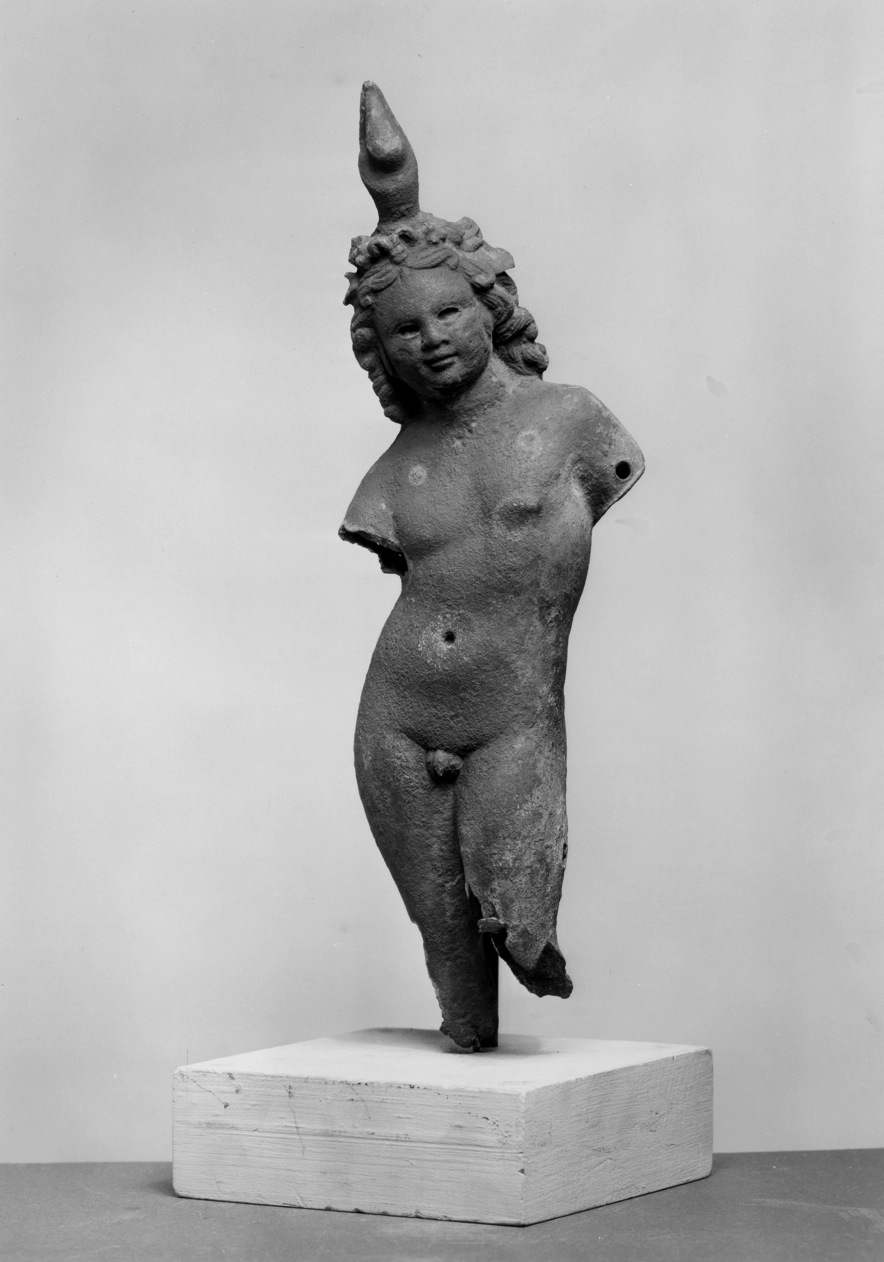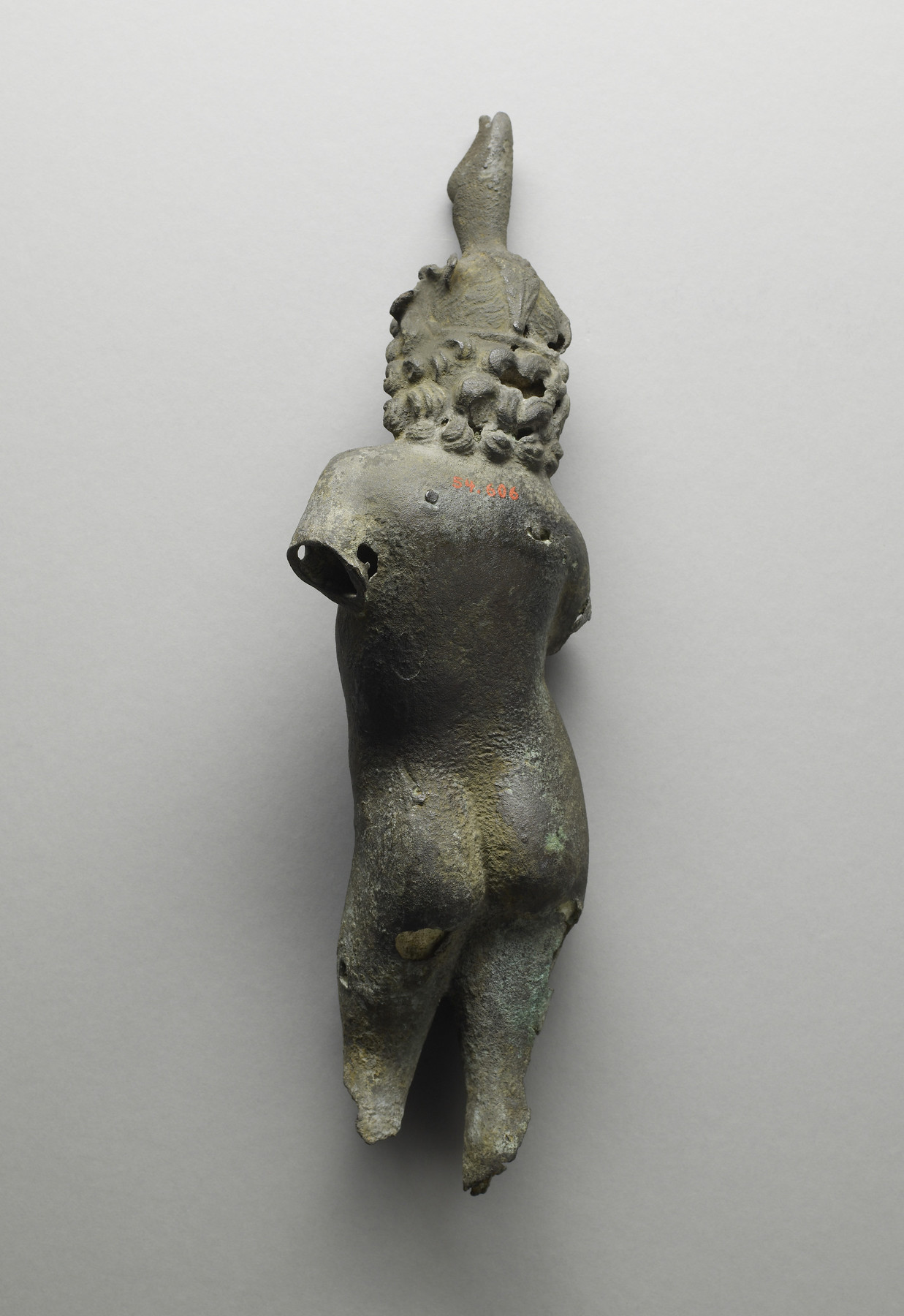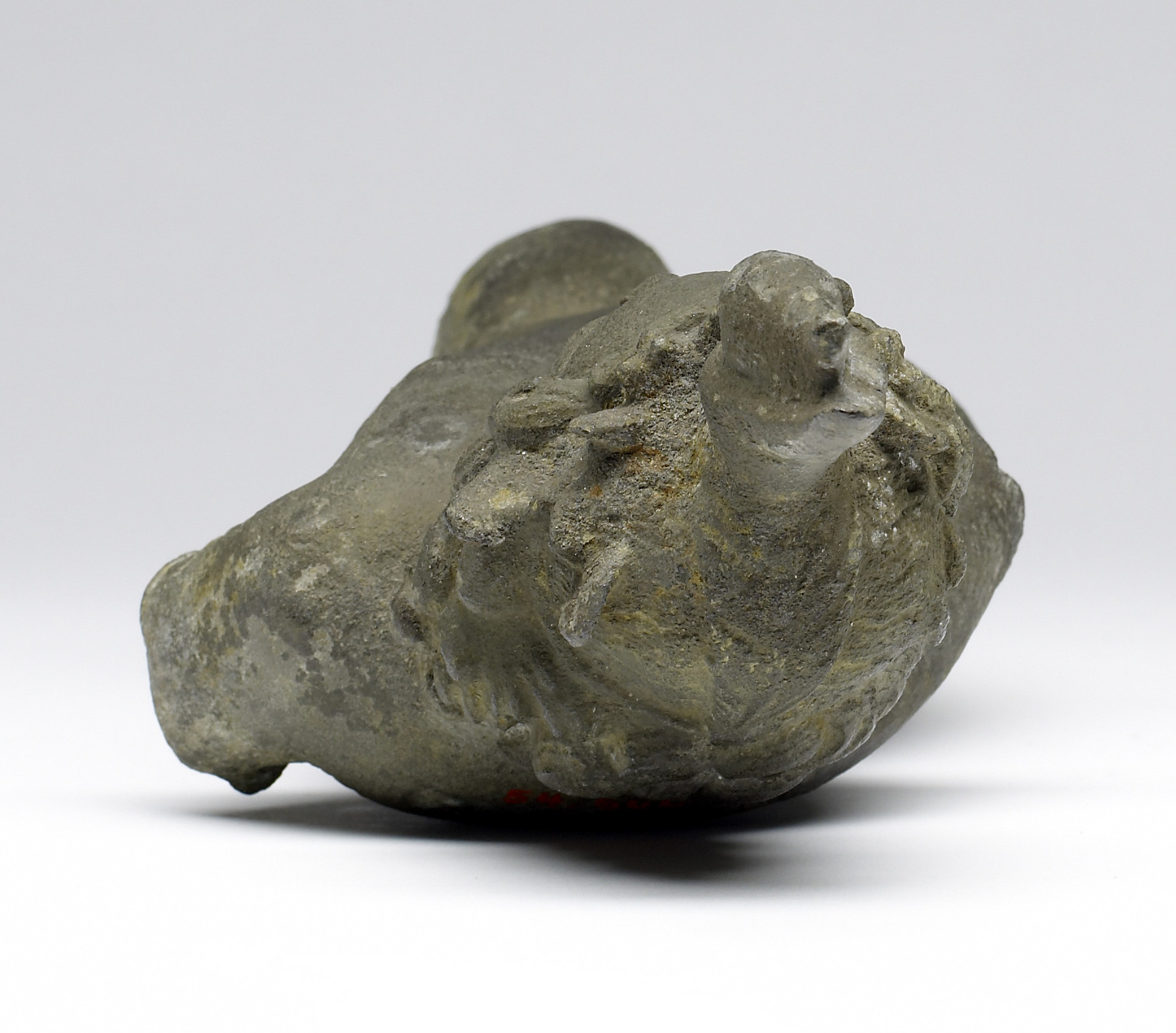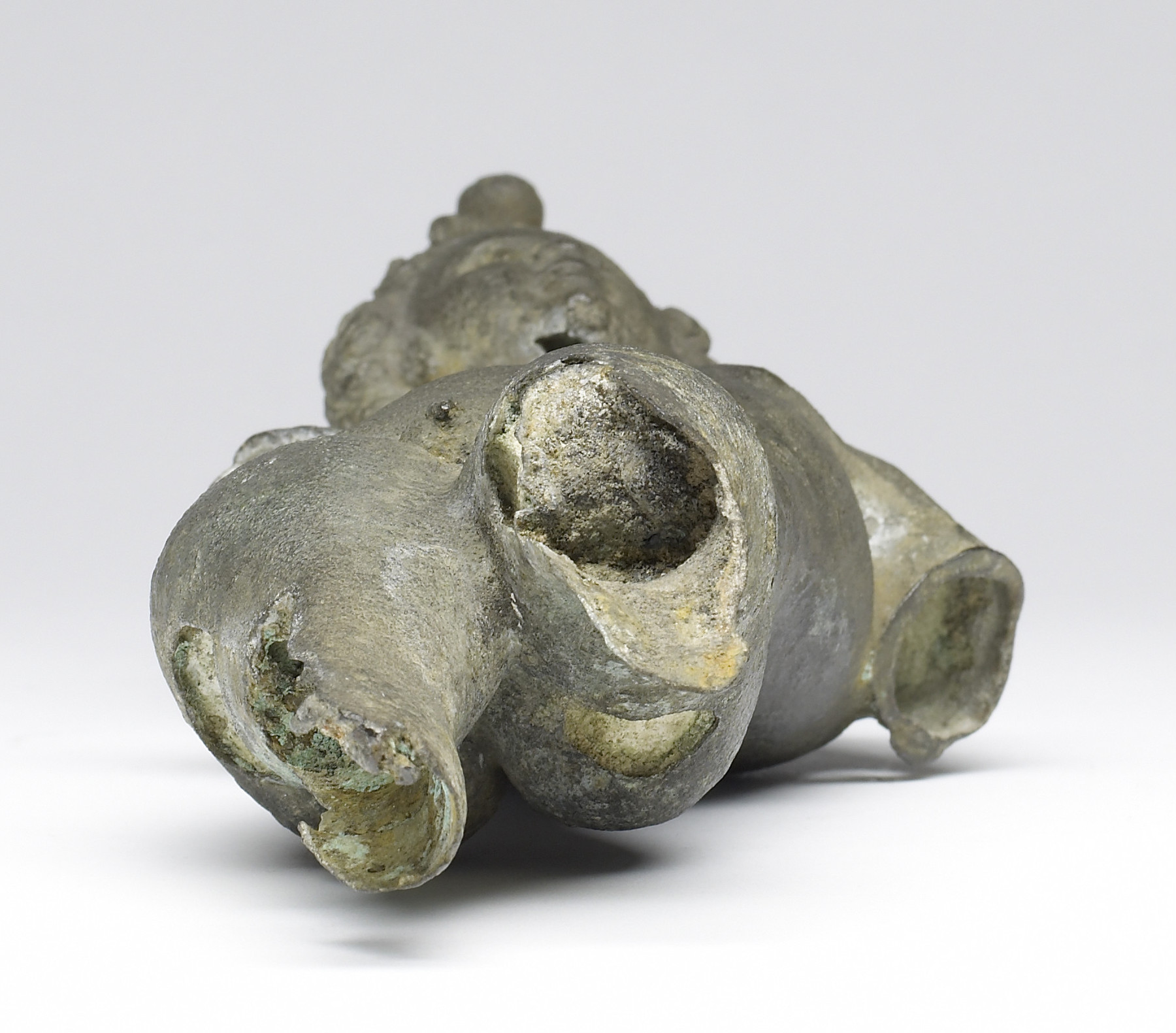Harpokrates (Horus the Child)
(Roman Empire )
Nude Harpokrates stands in a marked S-curve; his legs are broken and missing below the knees, while the arms, apparently mechanically riveted on, are lost. Comparisons with other representations of Harpokrates suggest that he held a cornucopia in his proper left arm and put his right index finger to his mouth, as a gesture representative of children. He wears the combined crown of Upper and Lower Egypt. His wavy hair is bound into a top knot above his forehead and is partially braided in the back. The eyes would have held inlays.
Provenance
Provenance (from the French provenir, 'to come from/forth') is the chronology of the ownership, custody, or location of a historical object. Learn more about provenance at the Walters.
Dikran Kelekian, New York and Paris, [date and mode of acquisition unknown; said to be from the Delta of Egypt]; Henry Walters, Baltimore, 1914, by purchase; Walters Art Museum, 1931, by bequest.
Conservation
| Date | Description | Narrative |
|---|---|---|
| 3/9/1953 | Treatment | other |
| 6/7/1957 | Treatment | cleaned |
Geographies
Egypt, Delta region (Place of Origin)
Measurements
Max preserved H: 13 1/16 × max preserved W: 4 3/16 in. (33.2 × 10.6 cm)
Credit Line
Acquired by Henry Walters, 1914
Location in Museum
Not on view
Accession Number
In libraries, galleries, museums, and archives, an accession number is a unique identifier assigned to each object in the collection.
In libraries, galleries, museums, and archives, an accession number is a unique identifier assigned to each object in the collection.
54.606














